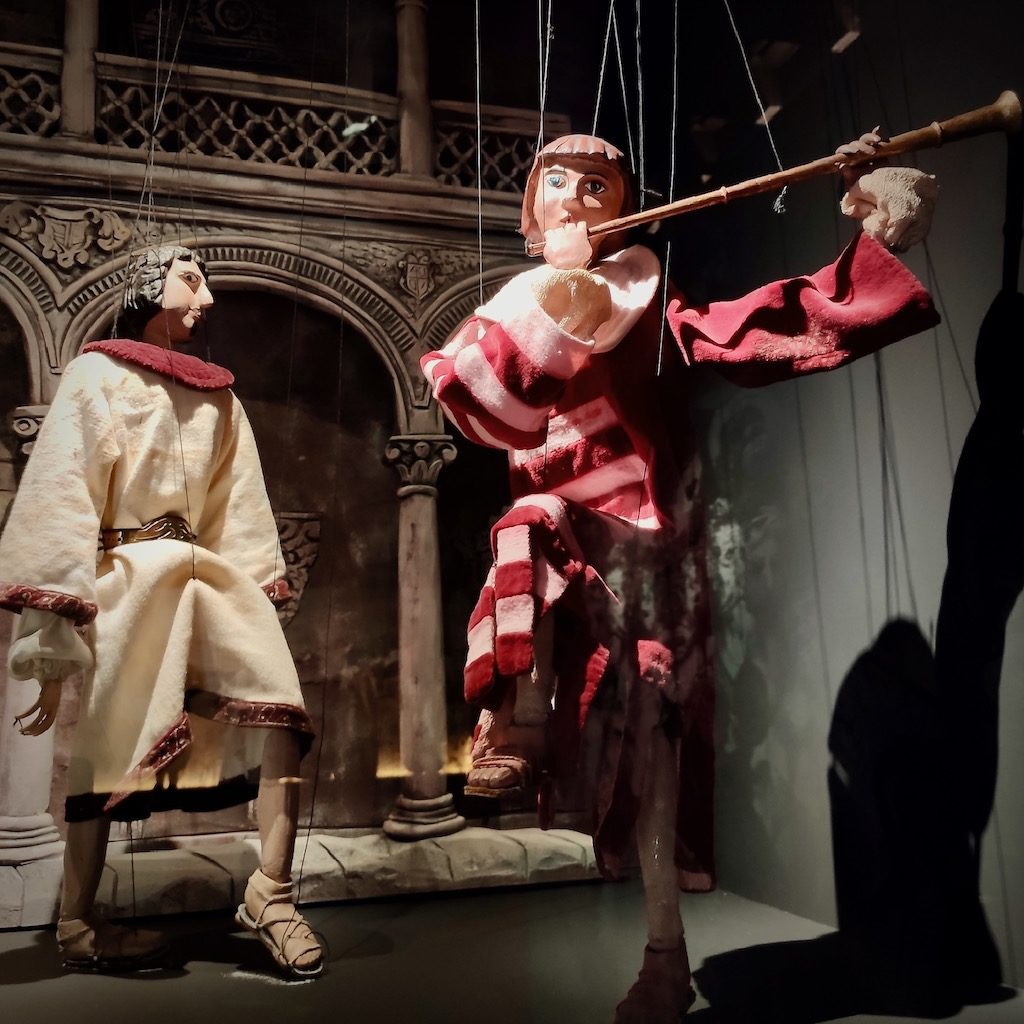The three main reasons why the city of Alcalá de Henares is so well-known


First of all, it is the city where the writer Miguel de Cervantes was born.
He was born in 1547. The author of the famous novel Don Quixote de la Mancha, published in 1605, he is considered to be one of the greatest Spanish writers.




Next, Alcalá de Henares is famous for its university with the same name, founded in the 16th century by Cardinal Jiménez de Cisneros.
The project included the construction of colleges, university residences, publishing houses, and hospitals. To build these infrastructures in one place, he acquired land in the east of the medieval town. This campus, thus developed, contributed to the excellence of the University of Alcalá. It was the first time in history that one designed a town to be specifically a “university town.”


The way the city was organized was remarkable. The religious orders, the citizens, and the academic circle lived in harmony. It was also the reason why the cardinal Jiménez de Cisnero considered it the ideal city — the “City of God.” This model was exported by the Spanish missionaries to the Americas. Soon after, many universities in Europe and America followed suit.
The final step of the city’s consecration was that of Miguel de Cervantes and his writing. It elevated the city to the highest level of reconnaissance.
The cardinal’s ambition to recreate the City of God then became a reality.
And finally, the third and most unlikely reason is the number of storks that nest on the city’s roofs.




I didn’t notice them right away. But when looking up to admire the buildings, you can’t miss them. There are nests of white storks all over the roofs! I later learned that the city had counted up to approximately 130 nests. The white stork has even become a symbol of the city. Incredible! I didn’t expect this spectacle at all.
Alcalá de Henares is the perfect city for these storks. In addition to the town’s calm—far from the main roads, the city takes good care of them. They replace the old nests with sturdy platforms and place artificial nests when necessary. Also, they rescue the chicks who fall from the nest and/or are injured and carry out public awareness activities.
The place is so perfect that some say that the storks forget to migrate!
To better understand these guests, researchers set up a comprehensive project to study the white stork. They equipped a stork named “Alcala” with a GPS and tracked him in real time. The study was a success! Not only did Alcala survive his first year, he also made the round trip from South of the Sahara. This excellent result delighted everyone in the city. 😃
But let’s now explore this city full of history, a UNESCO World Heritage Site since 1998.
Our city tour


As we arrived by car, we parked on the outskirts of the old town. We stayed a few hours in Alcalá de Henares and opted for a walking city tour with a stop at the Cervantes Museum.
The Archaeological Museum of the Community of Madrid


The city inaugurated The Archaeological Museum on May 25, 1999, 14 years after the decision to convert this former convent of the Madré de Dios into a museum.
The first part of the museum tells the story of the convent. Built initially for the Dominican Order, it was then a barrack, a prison, a court of justice until it became a museum. Then, there is a chronological display of the Madrid region evolving from prehistory to the present day.
The Cistercian Convent of San Bernardo


Cardinal Bernardo de Sandoval y Rojas, Toledo’s archbishop and cardinal, founded the Cistercian Convent of San Bernardo in 1613. Popularly known as the Convento de las Bernardas, 24 cloistered nuns lived there when it opened, but over time, only six remained. They then had to close it in 2000, the six nuns having to join another nunnery.
Catherine of Aragon


Alcalá de Henares was Catherine of Aragon’s home before leaving the peninsula to marry Henry VIII, King of England. Unfortunately, as she didn’t give birth to a male heir, Henry VIII asked the Pope to annul the marriage. The Pope refused the request. Henry VIII then had the “Act of Supremacy” drafted, declaring the King as “the sole and supreme leader of the Church of England.” This writing led to the separation of the Church of England from the Catholic Church.
Isabelle I or Isabella the Catholic


Spaniards considered Isabella I, Queen of Castile and Queen Consort of Aragon as the first queen of Spain in her own right. After gaining the throne by usurping her niece, she reorganized the government system completely. She brought the crime rate back to the lowest level in years and relieved the kingdom of the enormous debt her brother had left behind.
Roman Catholic Diocese of Alcalá de Henares


It was here that, in the 1480s, Christopher Columbus had his first encounter with the Reyes Catalicos—King Ferdinand II of Aragon and Queen Isabella I of Castile, who financed the journey to discover what would be America.
The main street, Calle Mayor


The main street, built in the 12th century, followed the route of the ancient Roman road. It is the longest street in Spain with arcades.
It has been preserved as it is, and when you pass under the arcades, you can see the buildings’ dilapidated foundations.


The street runs through the old Jewish quarter, whose houses have retained their original facades.




Cervantes Museum
This 15th-Century house belonged to Miguel de Cervantes‘ family. Around a beautiful courtyard with Renaissance-style columns are the rooms of a traditional Spanish home.














Don Quixote de la Mancha
Don Quixote de la Mancha was published in two volumes, in 1605 and 1615 respectively, and described as the “first modern novel” after the Middle Ages. Many authors consider it the best literary work ever written. It is also one of the most widely read books in the world.
The plot revolves around the adventures of Alonso Quixano. This nobleman from La Mancha, obsessed with chivalrous novels, loses his mind and decides to become a wandering knight. He goes on to fight evil and seek his dulcinea across Spain on his horse, Rocinante, taking the name “Don Quixote de la Mancha.”
In his quest, he recruits a simple farmer, Sancho Panza, as his squire. Obsessed with food and aware of his master’s madness, he decides to accompany him to help him protect the oppressed.
San Diego Square with a statue of Saint Cisternon


San Ildefonso University


Located in San Diego Square, Cardinal Cisneros founded it in 1499. It has one of the most remarkable facades of the Spanish Renaissance. Inside we can find the Paraninfo. This is where every 23rd of April, the royal couple awards the Cervantes Prize to honor a writer’s outstanding career in the Spanish language. There is also the San Ildefonso Chapel, where Cisneros’ tomb rests.
We were a little disappointed as the university only offers guided tours in Spanish, and visitors are not allowed to walk around.
We continued our tour, crossing the Cervantes Square—the former market plaza that housed fairs and festivals for a very long time—to go to the theatre.
The theater Corral de Comedias


Built by the city of Alcalá de Henares in 1601, this is now the oldest preserved theater in Europe. Over the years, it has undergone some modifications. A roof was added above the auditorium, and dressing rooms were built. On the other hand, the building’s original rectangular structure, the stage, the pit, the bleachers, and the space occupied by the “cazuela” are still in their original state.
Before the 16th Century, there were no concrete theaters in Spain. The shows took place in houses or inns courtyards rented for this purpose, and the troupes then had to improvise a stage at the back of the patio. The nobility used the upper floors of the houses that overlooked the courtyard as loges, while the rest of the spectators stood facing the stage. After this period, theaters were built around existing closed patios like the ones we know today.
Unfortunately, the Corral de Comedias was closed when we came to the city, so we weren’t able to visit it.


The town ramparts


The Faculty of Philosophy and Letters


College-Convent of the barefoot Trinitarians—Trinitarios descalzos


The Trinitarian John Baptist Of The Conception founded the Congregation of the Barefoot Trinitarians in 1601. The convent’s construction began in 1626, its architecture in Madrid’s typical Baroque period.
Magisterial Cathedral of Saints Justus and Pastor


Its origin dates back to Justus and Pastor‘s martyrdom, which took place at the beginning of the 4th Century. The two schoolchildren, aged nine and 13, were killed for their Catholic faith during Diocletian’s persecution. Whipped and beheaded, today they are considered the patron saints of schoolchildren and Alcalá de Henares.
What makes this church unique is that it is the only church alongside Belgium’s Saint-Pierre Church of Louvain to have the title of “Magistral Church.” It was given this title in 1519, which assumes that all its canons must have a doctorate in theology. Later in 1991, it was converted into a cathedral.






Hermitage of St Lucia


Hermitage of St. Lucia is one of the city’s most iconic buildings. In the Middle Ages up until 1515, the city council used to gather here for political functions. It was also the first place where the city’s municipal council sat. For these reasons, one can see why this place is so symbolic.
Similar to the other buildings in Spain, it was used for different purposes over the years. Since the 90s, it served as a Polish Catholic chaplaincy dependent on the diocese of Alcalá de Henares.
Built in the 12th Century, it was initially in the Roman-Mudejar style. Then it was transformed into the Baroque style in the 17th Century. Finally, it was the third reconstruction in 1966 that gave it its current appearance.
Conclusion
Alcalá de Henares is a lovely city that surprised us with its history and its buildings’ beauty. Unfortunately, we did not have enough time to enjoy it fully. A whole day would have been perfect.

I would love to visit here. It seems so far from the crowds and at the same time, full of treasures. Another great find Frederique.
The kind of village I love. Charming and full of history.